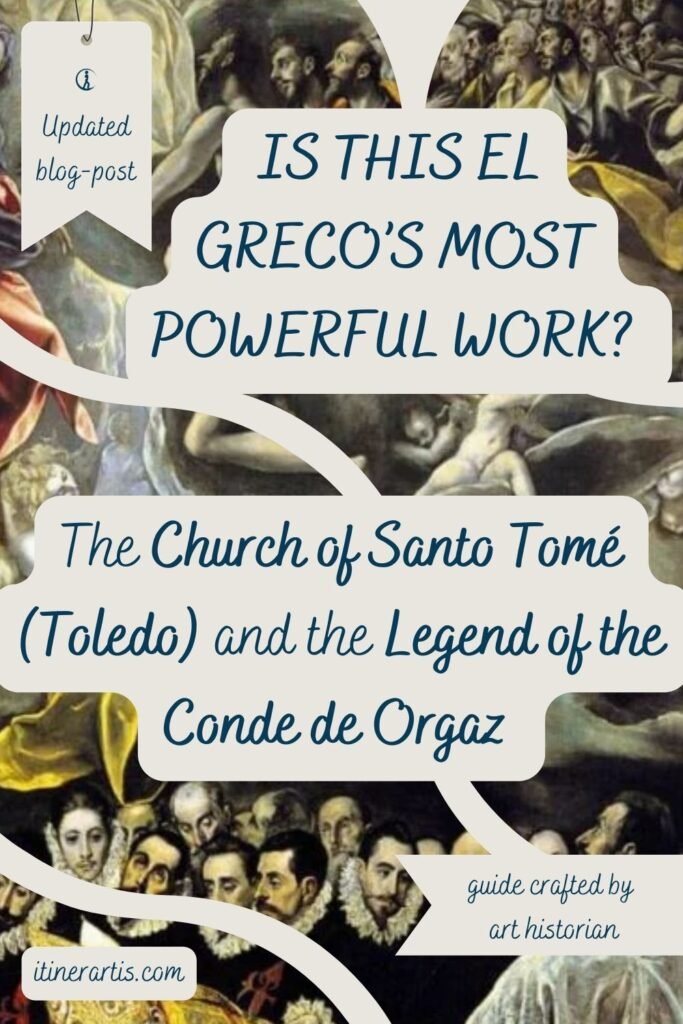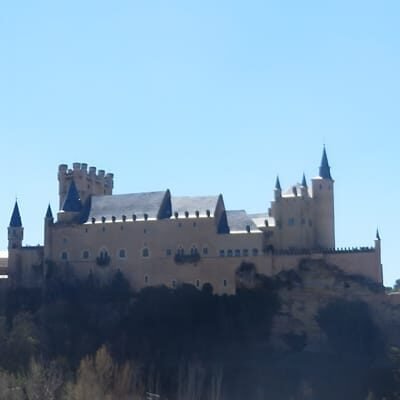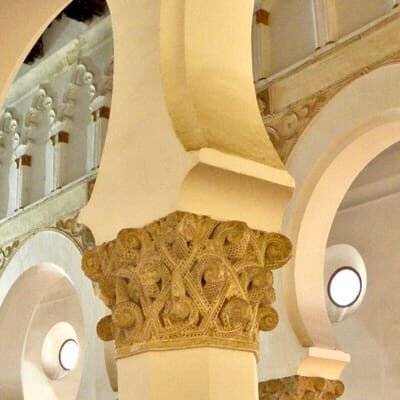Is This El Greco’s Most Powerful Work? How the Church of Santo Tomé (Toledo) and the Legend of the Conde de Orgaz Revolutionized Art History
Tucked away within Toledo’s honey-colored labyrinth of medieval streets, the Church of Santo Tomé seems humble, almost invisible. You might wander past, unaware of what lies beyond its modest facade. Yet step inside, and the air thickens with whispers—of saints and secrets, miracles and myths. Here, in quiet splendor, hangs a canvas that defies time itself: The Burial of the Conde de Orgaz, the masterpiece that forever changed art history.
![Church of Santo Tomé, Toledo, Spain [Edited Photograph]. Credit: User (WT-shared) Shoestring at wts.wikivoyage. Released into the public domain.](https://itinerartis.com/wp-content/uploads/2023/01/5.-Church-of-Santo-Tome-Toledo-Spain-Edited-Photograph.-Credit-User-WT-shared-Shoestring-at-wts.wikivoyage.-Released-into-the-public-domain.jpg)
But who exactly was the Conde de Orgaz, and why did his burial inspire one of Spain’s greatest artists? El Greco, the painter famed for his elongated figures and shimmering spirituality, captured the soul of Toledo in this single work. Heaven cascades down, saints appear from thin air, and the count himself rests in eternal dignity. Standing before this scene, you’ll sense a story deeper than paint—one woven from legend, faith, and human memory.
As you linger, your eyes adjusting to the soft shadows of Santo Tomé, Toledo, you’ll wonder why you’ve never seen this painting before. It’s not in Madrid’s Prado or hidden away in a far-off gallery—it’s here, exactly where El Greco intended. Keep reading, and uncover the tale behind this extraordinary masterpiece, hidden quietly within this modest church.
Post last updated on April 5, 2025 (originally published on January 14, 2023) by Roberta Darie.

- A Hidden Treasure in the Church of Santo Tomé, Toledo
- Who Was the Conde de Orgaz? The Nobleman Behind the Miracle in the Church of Santo Tomé
- El Greco’s Masterpiece: The Burial of the Count of Orgaz
- The Church That Holds the Canvas: Mudéjar and Gothic in Dialogue
- Planning Your Visit: How to Experience the Church of Santo Tomé Like an Art Historian
- Final Reflections: The Church of Santo Tomé and the Eternal Count
“He opened the heavens above Toledo and painted what he saw.”
— José Ortega y Gasset

A Hidden Treasure in the Church of Santo Tomé, Toledo
Walk through the maze of Toledo’s old town, and chances are you’ll pass it without pause. A modest church shadowed by more imposing neighbors. But step closer, and history begins to shift beneath your feet. This is the Church of Santo Tomé, a place where the layers of Toledo, Spain—Islamic, Christian, and artistic—intertwine with quiet intensity.
Originally mentioned in the 12th century, the church was built over an earlier mosque, a common practice following the Reconquista. The structure was not torn down but transformed, reflecting the city’s overlapping identities. In the 14th century, it was reshaped with purpose by Gonzalo Ruiz de Toledo, lord of the nearby village of Orgaz. His patronage didn’t just expand the building—it embedded a story that would later become legend.
Today, the church’s Mudéjar-style bell tower, once a minaret, still carries hints of its Islamic past. Glazed ceramics and Visigoth elements decorate its surface, while inside, the layout opens onto a chapel that quietly guards one of Spain’s most iconic paintings. But this is not just a place of worship. It is a frame around a miracle, one that would forever link the name of the Conde de Orgaz to El Greco.
Who Was the Conde de Orgaz? The Nobleman Behind the Miracle in the Church of Santo Tomé
Before becoming a subject of legend—or the still center of a masterpiece—Don Gonzalo Ruiz de Toledo was simply a man who gave more than he took. As Lord of Orgaz, this 14th-century nobleman was admired for his piety, humility, and generous patronage of the Church of Santo Tomé in Toledo, Spain. When the church was rebuilt around 1300, it was largely thanks to his support. He requested to be buried there, in the most unassuming corner.
But death, in his case, sparked a miracle.
According to local tradition, when Gonzalo died in 1323, his body was to be laid to rest as he wished. Yet, during the funeral, something extraordinary occurred. As the story goes, Saint Augustine and Saint Stephen descended from heaven, robes billowing, and solemnly placed the nobleman in his tomb with their own hands. Onlookers stood in stunned silence. A voice was said to whisper, “Such is the reward of those who serve God and his saints.”
Whether miracle or metaphor, the story became inseparable from the place—and from the man himself. Two centuries later, the parish priest of Santo Tomé would commission a painting to honor the event and secure the memory of Don Gonzalo Ruiz de Toledo. The result was more than just a devotional image. Through El Greco’s vision, the Conde de Orgaz was no longer just a name in a will or a stone in the floor. He became a bridge between heaven and earth, between Toledo’s past and its enduring place in art history.
El Greco’s Masterpiece: The Burial of the Count of Orgaz
Step into the entrance hall of the Church of Santo Tomé, and before you even reach the altar, you find yourself face to face with eternity. There, in an unassuming chapel to your right, awaits one of the most compelling paintings in Western art: El entierro del Conde de Orgaz.
Commissioned by the parish priest Andrés Núñez de Madrid, the masterpiece commemorates the death of Don Gonzalo Ruiz de Toledo, Lord of Orgaz. According to legend, when he died in 1323, Saints Stephen and Augustine descended from heaven to personally lay him to rest—a sacred tribute to his life of compassion and virtue.
Centuries later, between 1586 and 1588, El Greco transformed this tale into a sweeping vision that bridges two realms: the heaven above and the earth below. In the upper half of his composition, paradise unfurls in gauzy clouds and gleaming halos. Christ reigns in glorious peace, the Virgin Mary at his side. Meanwhile, a choir of saints and angels spirals upward, gliding through the folds of the silvery surface that veils them from the mortal world.
![El Greco: The Burial of the Count of Orgaz (1586–1588), Church of Santo Tomé, Toledo, Spain [Heavenly Part]. Credit: Egiptologoespaol. Licensed under CC BY-SA 4.0.](https://itinerartis.com/wp-content/uploads/2023/01/1.-El-Greco-The-Burial-of-the-Count-of-Orgaz.-Church-of-Santo-Tome-Toledo-Spain.-Copy.jpg)
The Gaze That Meets Our Own: El Greco’s Toledo Enters the Frame
Beneath, the nobleman—clad in polished armor—is gently placed in the earth by the saints’ ethereal hands. Around them gathers a solemn funeral procession. Yet, these are not imagined figures from the 14th century. Rather, El Greco filled the earthly realm with the faces of his own Toledo: 16th-century nobles, scholars, and clergy. Among them appears Antonio de Covarrubias, a close friend, and perhaps also the artist’s brother.
In the foreground, a boy dressed in ceremonial finery meets our gaze without flinching. Still and composed, he seems curiously detached from the grief around him. This is Jorge Manuel, El Greco’s ten-year-old son. With one hand, he gestures toward the miraculous burial at the center of the painting—a silent act of witness. In the other, he holds a slender torch, its flame flickering gently, evoking the soul’s journey beyond death. One finger points downward, toward the earth: a reserved reminder that the path to heaven opens beneath our feet. From the folds of his robe slips a handkerchief inscribed “Domenico Theotocopuli 1578”—a painter’s signature masked as a father’s tribute.
Just above Saint Stephen, another pale face emerges from the cluster of mourners, turning toward us with serene intensity. Believed to be El Greco himself, the artist steps into his own vision. By painting his presence into this scene of farewell, he dissolves the boundary between memory and creation—between those who grieve and those who look on. As a result, past and present, sacred and temporal, reality and representation begin to merge.
![El Greco: The Burial of the Count of Orgaz (1586–1588), Church of Santo Tomé, Toledo, Spain [Earthly Part]. Credit: Egiptologoespaol. Licensed under CC BY-SA 4.0.](https://itinerartis.com/wp-content/uploads/2023/01/2.-El-Greco-The-Burial-of-the-Count-of-Orgaz.-Church-of-Santo-Tome-Toledo-Spain.jpg)
The Space Between: When Art Becomes Passage
And between these realms, the soul of the Count ascends—fragile as breath, blazing as flame—carried heavenward by an angel. El Greco’s vision, steeped in Byzantine mysticism and charged with Mannerist tension, distorts proportion and bends light—not to imitate life, but to deepen its mystery.
Faces elongate, robes shimmer with unnatural brilliance, and shadows drift like memory. Yet nothing feels distant. Rather, it all feels intimate—timeless. The painting hangs within the Chapel of the Conception, just above the Conde’s actual tomb. This placement intensifies the encounter. Visitors don’t merely observe a miracle. They inhabit the space where it was meant to be remembered.
Few paintings have shaped Spanish art so profoundly. For in this chapel, El Greco did so much more than depicting a local legend… He reimagined the boundary between earth and heaven, between life and legacy. The effect? Disarming, disorienting, and unforgettable.

The Church That Holds the Canvas: Mudéjar and Gothic in Dialogue
The Church of Santo Tomé, like much of Toledo, is built on layers—of belief, architecture, and time. Long before it became home to El Greco’s Entierro del Conde de Orgaz, it had already absorbed centuries of history into its walls.
Originally cited in the 12th century, the site belonged to a former mosque, reclaimed after the Christian reconquest. When Don Gonzalo Ruiz de Toledo—Lord of Orgaz and the man later immortalized in the painting—financed its reconstruction in the early 1300s, the church took on a new shape. What stands today is a 14th-century Gothic-Mudéjar hybrid, reflecting the coexistence, not erasure, of cultural legacies.
The bell tower, once a minaret, was preserved and adapted. Its narrow windows, blind arches, and ornamental brickwork speak a language rooted in Islamic tradition, while its function shifted with the faith of the city. Inside, Gothic elements prevail: three narrow naves, pointed arches, and a ribbed vault that spans the ceiling like a stonemason’s echo of the heavens.
Beyond the Chapel of the Conception—where El Greco’s painting presides—other side chapels remain active with quiet devotion. The Virgin of the Incarnation, the Dolorosa, and Monte-Sión maintain centuries-old rituals. Altarpieces in Baroque and Plateresque style interrupt the Gothic sobriety. Among these, a 14th-century polychrome alabaster Mary of the Smile—twin to the Virgen Blanca of Toledo Cathedral—adds a note of sculpted serenity to the church’s layered history.
However, this isn’t a grand cathedral, nor was it meant to be. The Church of Santo Tomé is modest in scale but dense with meaning. A building where Toledan architecture doesn’t merely house art, but becomes part of its theological and historical dialogue.
![Church of Santo Tomé, exterior view, Toledo, Spain [Edited Photograph]. Credit: Harvey Barrison. Licensed under CC BY-SA 2.0.](https://itinerartis.com/wp-content/uploads/2023/01/4.-Church-of-Santo-Tome-exterior-view-Toledo-Spain-Edited-Photograph.-Credit-Harvey-Barrison.-Licensed-under-CC-BY-SA-2.0.jpg)
Planning Your Visit: How to Experience the Church of Santo Tomé Like an Art Historian
The Church of Santo Tomé is one of the most famous churches in Toledo, Spain, yet it remains surprisingly manageable if timed right. Aim to arrive early, just after it opens. The space tends to stay quiet in the morning, giving you a better chance to take in El entierro del Conde de Orgaz without distraction. By midday, groups begin to arrive, and the small chapel fills quickly.
You can buy a single-entry ticket at the door, or use the Toledo Tourist Bracelet, which covers entry to seven monuments, including the Toledo Cathedral, Monastery of San Juan de los Reyes, and Santa María la Blanca. If you plan to visit more than two or three sites, the bracelet is both convenient and cost-effective.
Plan to spend at least half an hour inside. Many visitors move on after a few minutes, but the painting rewards those who linger. The Chapel of the Conception may be small, yet the scene it holds—of saints, nobility, and El Greco’s timeless vision—invites close, unhurried attention.
You’ll find the church on Calle de Santo Tomé, in the heart of Toledo’s Jewish quarter. The walk there winds through uneven cobblestones, so wear comfortable shoes. Inside, the mood is hushed, reverent, even during peak hours. After all, you’re not just looking at a painting. You’re standing at the intersection of myth, memory, and art history.

Final Reflections: The Church of Santo Tomé and the Eternal Count
Long after you step back into the sunlit alleys of Santo Tomé, Toledo, the image endures. A nobleman lowered with reverence, saints descending like echoes of grace, and El Greco—watching from within his own creation. In this chapel at the edge of the Church of Santo Tomé, legend and brushstroke intertwine so closely that they become indistinguishable.
You came looking for a painting. What you found was a conversation across centuries—between Don Gonzalo Ruiz de Toledo, the so-called Conde de Orgaz, and the city that remembered him with stone, ritual, and art. Through layered gestures and luminous folds, El Greco didn’t just honor the miracle; he made it visible. And not in a museum, but here, exactly where it happened.
So, linger. Let your eyes adjust again to the dim light. Trace the path from altar to canvas, from silence to soul. Because the Church of Santo Tomé holds more than a masterpiece. It holds a moment when the divine brushed against the mortal, and art rose to meet it. If this moved you, share the story. Or better yet, follow its trail through Toledo’s winding streets until you’re standing before it yourself.




